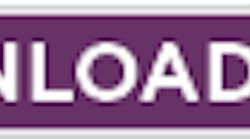A wise man once said that nothing is permanent except change. Advances in technology and communication in recent years have increased the ability to detect and trace the source of product failure or recall resulting in greater accountability. This is reflected in the expectations of customers, regulatory, and other interested parties that prompt a need for change.
Food Safety and Regulatory Outlook
Take a look back at our Food Safety and Regulatory columns of 2015 and see their guidance on how issues like the evolving Food Safety Modernization Act, GMO labeling, the upcoming Dietary Guidelines and labeling changes will play out in 2016.
In the food industry, a series of food safety failures and low consumer confidence prompted the world’s food retailers to form the Global Food Safety Initiative (GFSI), a non-profit foundation that established food safety criteria to benchmark and approve standards (schemes).
Following market lead, the U.S. in 2011 passed the Food Safety Modernization Act (FSMA) — the biggest change to food safety laws since 1906 — requiring hazard analyses and risk based controls to be applied across the entire food industry. Certification to GFSI benchmarked schemes provides the management system tools that meet FSMA regulations.
FSSC 22000 food safety system certification scheme is the only GFSI-approved scheme based on the ISO 22000 series of standards.
Organizations certified to FSSC 22000 requested the ability to integrate ISO 9001 quality into their certification scope as ISO quality requirements add strength to food safety management systems. The latest revision of ISO 9001:2015 meets the FSSC 22000-Q requirements and adds new elements for improving performance.
Let’s take a look at some of the changes:
- New requirements for defining the Context of the Organization and Needs Expectations of Interested Parties have been added to ensure the quality management system (QMS) is aligned with the company mission, purpose and strategic direction. Customer Focus and risk-based plans needed to enhance customer satisfaction are included. Also included are requirements for monitoring and review of these processes to ensure continual improvement.
- Integration of business processes – ISO 9001:2015 requires the organization to define the needed processes, including their sequence and interaction, risk-based controls and continual improvement. A major change requires involvement and commitment of Leadership to ensure that QMS processes are integrated into the organization’s business processes that are core to its existence and for top management to take accountability for the effectiveness of the quality management system.
- A new element of Actions to Address Risks and Opportunities is added to the requirements as a strategic measure. Application is similar to that of the HACCP risk assessment process, but is less restrictive. It is important to note the risk is defined as the effect of uncertainty — positive or negative. This process can also be used as a tool to help leaders manage the positive aspects of the business culture. For example, management of business objectives and new projects can be planned and evaluated not only for their potential negative impacts, but also for their actual financial benefits or their positive effect on business growth.
About the Author
Tassos Metaxas is a senior trainer/consultant for AQS Management Systems Inc., for the last six years specializing in ISO 9001, ISO 14001 and FSSC/ISO 22000 management systems. He's also a member of ASQ, also known as the American Society for Quality, which has more information on ISO 9001:2015 at asq.org.
- Changes to Resources require consideration be given to staffing needs, allocation of responsibilities, and existing constraints for the provision of People needed for effective implementation. A new element of Environment for Operation Processes requires that the environment is suitable based on social, psychological and physical factors relating to personnel. This will require new approaches and possible involvement of HR.
- Operational Planning and Control processes help to ensure management of change. Requirements outline the steps needed to effectively design and develop products or services. The logical sequence of these process requirements includes key components (milestones) that an organization needs to effectively implement project management changes. While similar to HACCP, these processes are managed on a wider-reaching scale that, when integrated, will strengthen ISO 22000 food safety management and other business processes (e.g., environmental, safety, growth, profitability).
- Some Terms and Definitions have been changed in order to increase flexibility and facilitate integration of management systems into the organization’s business processes. The term Leadership is used to increase involvement and accountability of people at different levels. External Providers is used as a specific term that includes requirements for providers of Services or materials. Documented Information is used instead of procedures and records.
Visit ASQ Quality Management Standards for more information on ISO 9001:2015.
The ISO 9001:2015 requirements, though more flexible, are sufficiently prescriptive and can be audited with confidence to ensure accountability at the point of use. Although procedures are not specifically required, however, the QMS processes needed shall be determined and maintained as documented information (clause 4.4).
ISO 9001:2015 goes beyond mere conformance and raises the bar to higher expectation of effectiveness (stated 23 times) and continual improvement (stated 20 times). Companies that effectively implement ISO 9001 will benefit from its strengths to improve food quality and business performance.
